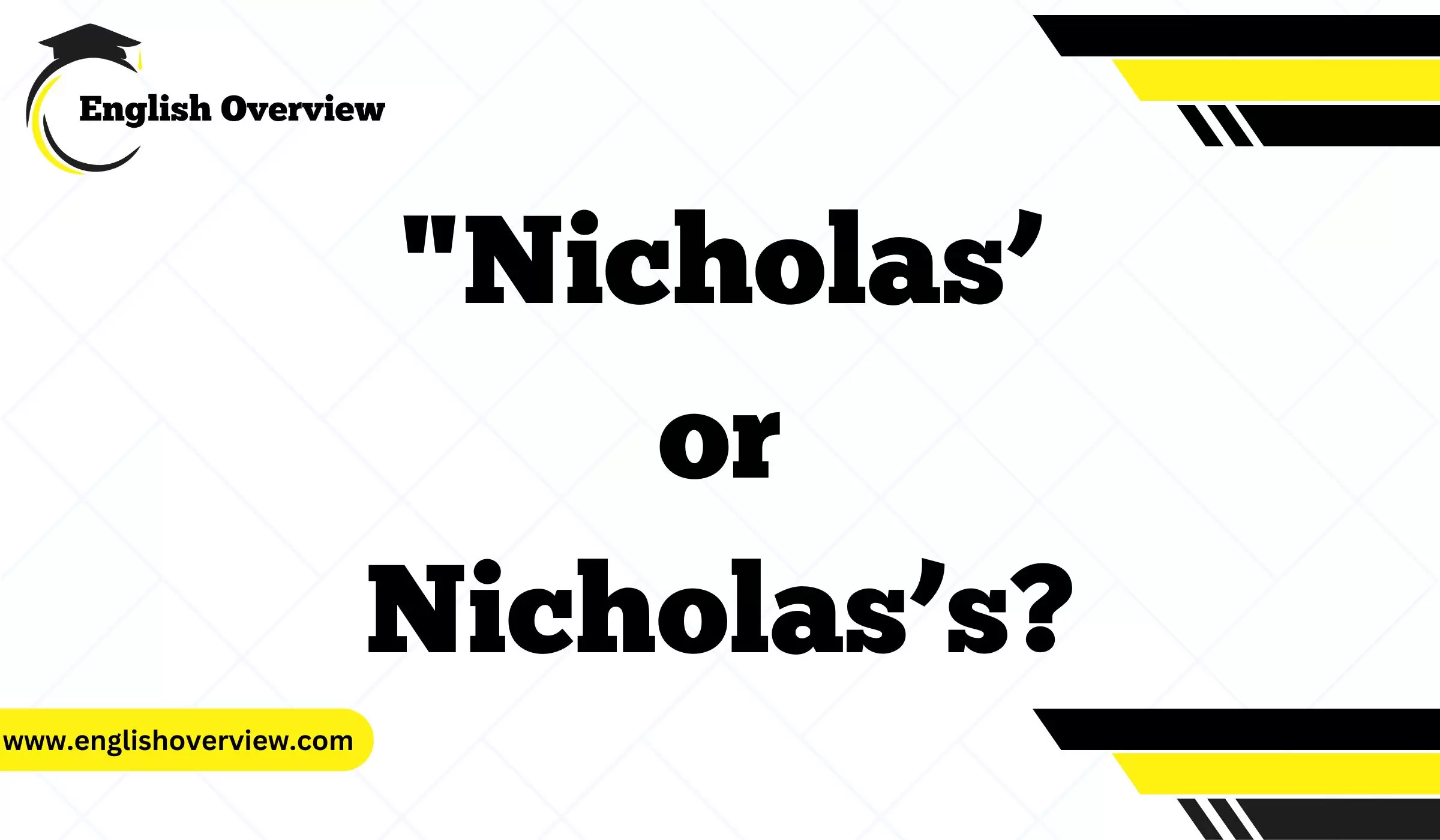When it comes to the English language, one area that often causes confusion is how to correctly use possessive forms, especially with proper names ending in “s.” Let’s take the name Nicholas as an example and explore how to make it singular possessive, plural possessive, and understand its plural forms.
We’ll use a simple table to help make these concepts clearer and ensure that anyone can understand, aiming for clarity and simplicity in our explanation.
What are Possessive Forms?
Before we dive into the specifics of “Nicholas,” let’s briefly talk about what possessive forms are. In English, when we want to show that something belongs to someone or something, we use the possessive form. For example, “the dog’s ball” means the ball belongs to the dog.
Singular Possessive Form

When we talk about something that belongs to only one person named Nicholas, we’re dealing with the singular possessive form. The big question here is: do we write “Nicholas’” or “Nicholas’s”?
The Rule
The general rule for forming the singular possessive is simple: add an apostrophe followed by an “s” to the noun. However, for names that end in “s,” like Nicholas, both “Nicholas’s” and “Nicholas’” are commonly accepted. The choice between them often depends on the style guide you are following or personal preference.
- The Modern Trend: Many style guides, including The Chicago Manual of Style, recommend adding an apostrophe and an “s” even when the name ends in “s.” So, you would write “Nicholas’s book.”
- Traditional Approach: Some people and guides prefer just adding an apostrophe to names ending in “s.” So, it would be “Nicholas’ book.”
Plural Form
Now, if there are multiple people named Nicholas, how do we refer to them in plural form? Simply, we add an “es” to the end of Nicholas, making it “Nicholases.”
Plural Possessive Form
If we want to talk about something that belongs to multiple Nicholases, we need to use the plural possessive form. Here, we add an apostrophe to the end of the plural form.
- Forming Plural Possessive: You take the plural form “Nicholases” and simply add an apostrophe at the end. So, it becomes “Nicholases’.” For example, “The Nicholases’ house” means the house belongs to the Nicholases.
Table for Better Understanding
| Form | How to Write | Example |
| Singular | Nicholas | One person named Nicholas. |
| Singular Possessive | Nicholas’s or Nicholas’ | Nicholas’s book or Nicholas’ book. |
| Plural | Nicholases | More than one person named Nicholas. |
| Plural Possessive | Nicholases’ | The Nicholases’ house. |
Tips for Remembering
- Singular or Plural: First, decide if you are talking about one Nicholas or many. This will help you choose between “Nicholas” and “Nicholases.”
- Possession: Next, decide if you are showing possession. If yes, add an apostrophe (and possibly an “s”) accordingly.
- Read Out Loud: Sometimes, saying your sentence out loud can help you decide which form sounds right.
Conclusion
Remember, English is a flexible language, and rules can vary between style guides. Whether you choose “Nicholas’s” or “Nicholas’” for the singular possessive form, consistency is key. Use this guide as a reference, and don’t be afraid to choose the form that sounds and feels right to you. English, after all, is about communication, and as long as you are understood, you are on the right track.
Understanding the differences between “Nicholas’” and “Nicholas’s,” as well as how to form plural and plural possessive cases, can greatly improve your writing clarity and correctness. With practice, these rules will become second nature. Happy writing!

Ethan Richards is currently an English instructor at a university. She has experience in teaching and assessing English tests including TOEFL, IELTS, BULATS, FCE, CAE, and PTEG. With over a decade of teaching expertise, Ethan Richards utilizes his knowledge to develop English lessons for her audience on English Overview.


















